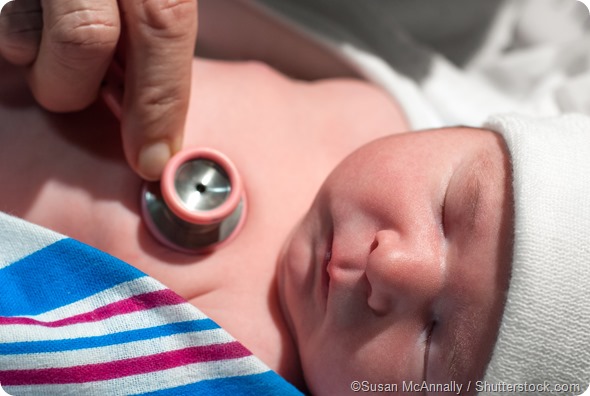Pulmonary hypoplasia is a condition where the lungs do not develop properly while a fetus is in the womb. This affects the baby’s ability to breathe independently after birth, as well as heart function, the ability to feed and development in general.

In pulmonary hypoplasia, the number of alveoli that allow gas exchange in the lung is reduced. In severe cases, the number is so low that adequate exchange of carbon dioxide and oxygen cannot be maintained and the baby is unable to breathe without support once born. If the baby is not supported long enough for new lung tissue to grow, there is a risk of lung failure and death.
The main diagnostic factors for pulmonary hypoplasia are the following:
- A history of fetal problems associated with the condition
- Maternal history of too little amniotic fluid
- Medical imaging that reveals small lungs
Management
Pulmonary hypoplasia usually occurs as a secondary problem to another health condition that is causing compression of the lungs or preventing their proper development. The condition is therefore managed in a number of different ways, depending on how small the lungs are and what caused the problem in the first place. If the hypoplasia is due to a problem that is causing the lungs to be compressed, then fetal intervention may be carried out.
Congenital diaphragmatic hernia
Congenital diaphragmatic hernia (CDH), for example, refers to when the baby’s diaphragm is not properly developed and has an opening in it. Some of the contents of the abdomen can then move into the chest cavity and develop there, which interrupts lung development. To avoid death due to severe pulmonary hypoplasia, surgery is performed to close the opening in the diaphragm and correct the problem while the baby is still in the womb.
Cystic adenomatoid malformation
Cystic adenomatoid malformation is another condition that may be resolved with fetal surgical intervention. In this condition, a cystic mass forms on the lung tissue which can then not function as normal tissue. Mothers whose babies have this condition undergo ultrasound scans each week to measure the volume of the cyst relative to the fetus size.
If the value of this ratio rises to 1.6 or higher, then fetal intervention may be arranged. Steroids are the first treatment approach, as a way of slowing or preventing growth of the mass. If steroids fail, then open fetal surgery may be needed to remove the mass and save the baby’s life.
If fetal intervention is not the chosen approach, the condition is managed using respiratory support, after the baby is born. The main problem with this is that all respiratory support techniques are associated with some degree of lung injury.
The aim is to provide as much support as possible while causing as little injury as possible to the lungs and to provide nutrition to help the lungs grow enough healthy tissue to support breathing. The baby receives supported breathing with the use of a ventilator. This often involves a technique called high frequency oscillation where the lungs are “wiggled” to aid gas diffusion, while causing minimal lung damage. The baby is also regularly administered nitric oxide, which dilates blood vessels in the lung to aid gas diffusion.
Blood pressure drugs may also be used to aid the flow of blood to the lungs. The lungs are supported until enough new lung tissue has grown for the lung can carry out normal gas exchange independently. Eventually, the baby can grow and develop enough healthy lung tissue to no longer require the respiratory support.
Prognosis
Prognosis depends on the extent of hypoplasia, what the underlying cause of the condition is and the presence of other congenital abnormalities. People who survive often experience chronic lung problems including poor lung capacity and susceptibility to chest infections.
Some infants with pulmonary hypoplasia develop a condition called pulmonary hypertension, which refers to increased pressure in the pulmonary arteries. This increased pressure eventually narrows the arteries meaning the heart has to work harder to force blood through them. Among babies with CDH, severe pulmonary hypoplasia and pulmonary hypertension are associated with reduced survival.
CDH Part 2: CDH Pulmonary Hypoplasia
Further Reading